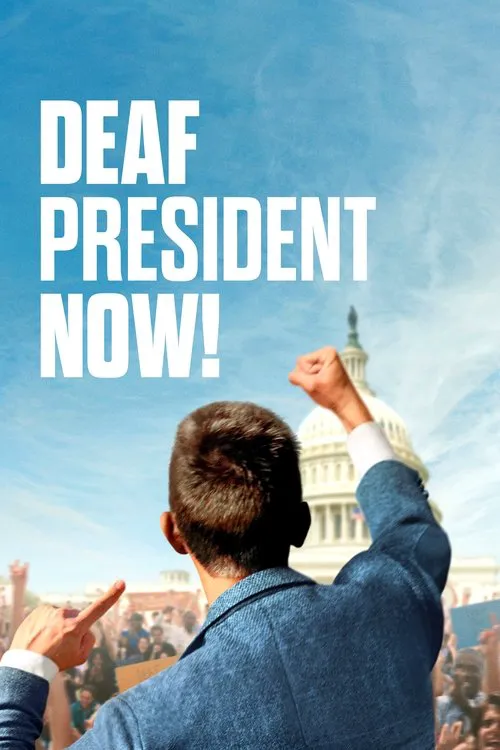Deaf President Now!

Plot
In 1988, Gallaudet University, the world's only liberal arts university for the Deaf, was on the brink of a major transformation. The institution was poised to select a new president, and the Deaf community was abuzz with anticipation and concern. For years, Gallaudet had been governed by a series of hearing officials who, despite their intentions, were often out of touch with the Deaf students and faculty. The Deaf community at Gallaudet felt that it was time for a change – a change that would put a Deaf person in the presidency, someone who truly understood and represented their needs. At the heart of this revolution were four students: Chris Wagner, I. King Jordan, Greg Hlibok, and Bridgetta Bourne. They were all Deaf and had grown up within the Gallaudet community. They were well aware of the struggles and frustrations that their predecessors had faced, and they were determined to see through their vision of a Deaf-led university. Chris was a charismatic leader who had always been at the forefront of Gallaudet's activism. I. King, on the other hand, was an outspoken, confident, and intelligent individual who possessed exceptional communication skills. Both of these qualities were essential to the students' plans. Greg, who was the son of a Gallaudet graduate, had a fierce determination to succeed, while Bridgetta, a recent transfer student, brought a fresh perspective and new ideas to the movement. The students began their campaign by organizing a series of protests and demonstrations on campus. They created posters, flyers, and other promotional materials to raise awareness about the importance of a Deaf president. They also met with various administrators and faculty members, hoping to persuade them to support their cause. However, the students' efforts were met with resistance and skepticism by many of the hearing administrators. They argued that a Deaf president would not be able to connect with alumni or attract funding from the larger hearing community. They pointed out that Gallaudet was a unique institution, one that catered to the needs of Deaf students but was still a liberal arts university with a broad range of academic programs. Despite these challenges, the students persevered. They gathered support from other Deaf students, faculty members, and alumni, and they organized a series of rallies and sit-ins to draw attention to their cause. Their message was simple yet powerful: Gallaudet needed a Deaf president who could truly understand and represent the Deaf community. As the protests escalated, the students began to attract national attention. They received support from various civil rights organizations, and their message began to resonate with people across the country. The students' determination and conviction inspired others to take action, and soon, the Deaf community at Gallaudet was mobilized behind a single goal – to elect a Deaf president. On April 8, 1988, the students put their plan into action. They occupied the university's administration building, blocking the entrance and refusing to budge until their demands were met. The protests turned into a full-blown occupation, with hundreds of Deaf students, faculty, and staff joining in to support the movement. As the occupation continued, the students negotiated with university administrators and faculty members to secure a guarantee that the next president would be Deaf. The negotiations were tense and often contentious, but in the end, the students emerged victorious. On April 15, 1988, the Board of Trustees announced that I. King Jordan, one of the student leaders, would become the university's new president. Jordan was the first Deaf person to lead Gallaudet, and his election marked a major milestone in the Deaf community's struggle for equality and recognition. The election of I. King Jordan as president was not just a victory for the students who had led the revolution – it also marked a turning point in the Deaf community's struggle for equality and recognition. Jordan went on to become a vocal advocate for the Deaf community, pushing for greater accessibility, inclusion, and diversity on campus. In the years that followed, Gallaudet continued to evolve and grow, becoming a model for Deaf empowerment and community-building. The revolution sparked by the students in 1988 paved the way for a new era of Deaf leadership and activism, inspiring other Deaf communities and institutions to take action and demand greater representation and inclusion. The Deaf President Now movement was a remarkable display of student activism, determination, and solidarity. It showed that even in the face of adversity and skepticism, young people with a shared vision and goal could bring about lasting change. The movement continues to inspire and motivate Deaf students and activists today, serving as a testament to the power of community and collective action.
Reviews
Recommendations




